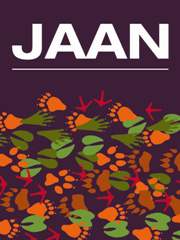Article contents
The efficacy of feeding a live probiotic yeast, Yea-Sacc®, on the performance of lactating dairy cows
Published online by Cambridge University Press: 22 October 2015
Summary
The following trial was conducted to evaluate the impact of feeding Yea-Sacc® (YS; Alltech Inc, USA), a zootechnical feed additive based on a live probiotic strain of Saccharomyces cerevisiae, to lactating dairy cows over a 12 week period. Sixty-four primiparous and multiparous Holstein dairy cows, grouped to give similar range of parity, physiological and milk production stages, were selected for the study. Cows were equally allocated to either a control feed group or a diet supplemented with YS (32 cows per treatment). The test diet was formulated to include YS (Yea-Sacc® Farm Pak) incorporated in the total mixed ration (TMR), supplying a target dose of 5 × 107 CFU/kg feed dry matter (DM). This target dose delivered 1 × 109 CFU/cow/day, for a cow consuming 20 kg feed (DM basis) daily. Each cow was considered a replicate unit. Cows were fed a nutritionally adequate total TMR plus hay and a supplementary protein/energy concentrate (calculated according to milk yield) for 12 weeks, supplied once a day after the morning milking. Weigh backs of feed were recorded daily, with refusals being maintained at 3% of the total intake. During the 12 week study period, YS had significant beneficial effects on milk production (+0.8 kg/day; P = 0.003), energy corrected milk production (+1.4 kg/day; P < 0.0001), synthesis of milk protein (+36 g/day; P = 0.001), milk protein content (+0.3 g/kg; P = 0.009), and milk urea content (−0.09 mg/l; P = 0.004). The synthesis of milk fat was similar between treatments but milk fat content was lower for the YS group compared to the control group (−1.1 g/kg; P = 0.0002). Lactose content was always higher (+0.8 g/kg; P < 0.0001) for the YS group, indicating enhanced energy utilisation. In general, the effect of YS was higher during the first study period (one to seven weeks), when cows were in early lactation and the production potential was higher. YS cows produced significantly more milk during the study, and an additional 220 kg milk per cow was sold from this group from the output measured from the beginning of the study to two weeks post-trial. However, the statistical analysis including the post-study period did not show a significant effect. The 305-day simulated milk production was higher for the YS group (+400 kg/cow) but again the difference was not significant. In conclusion, YS at a target dose of 5 × 107 CFU/kg DM improved milk production and milk quality in healthy dairy cows. In addition, when the data were included in a whole-farm model, feeding YS reduced methane emissions by 4%, reduced the number of animals required for the desired milk production by 4% and increased overall farm margins by 1.4%.
- Type
- Original Research
- Information
- Copyright
- Copyright © Cambridge University Press and Journal of Applied Animal Nutrition Ltd. 2015
References
- 15
- Cited by


